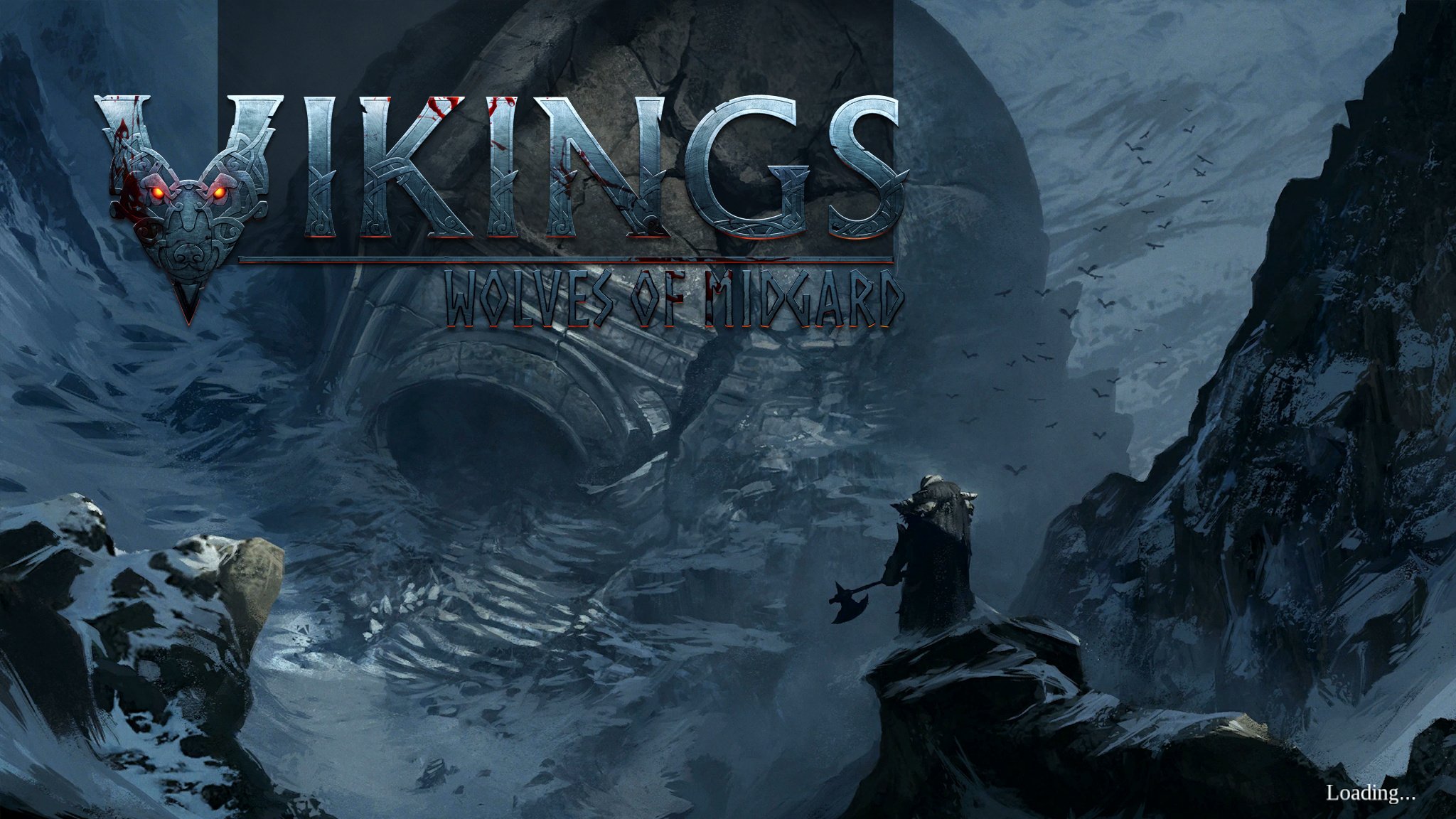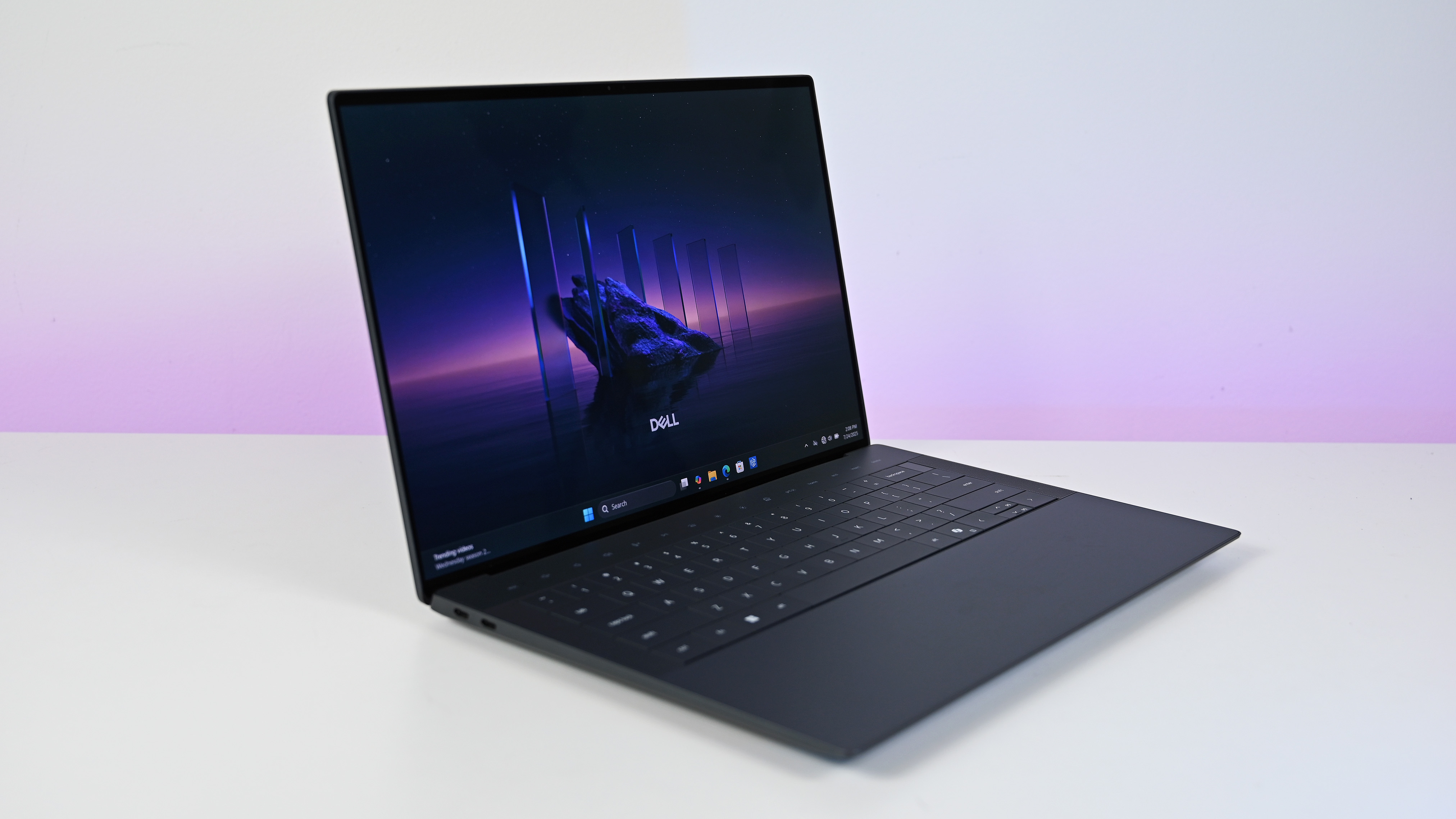There haven't been many alternatives to Diablo III on Xbox One until recently. Now, Vikings: Wolves of Midgard from Kalypso has come to Xbox and PC, adding Norse mythology into the familiar action-RPG loot-hunting formula. But does it have the bite to take on Diablo?
Gotta stop Ragnarok
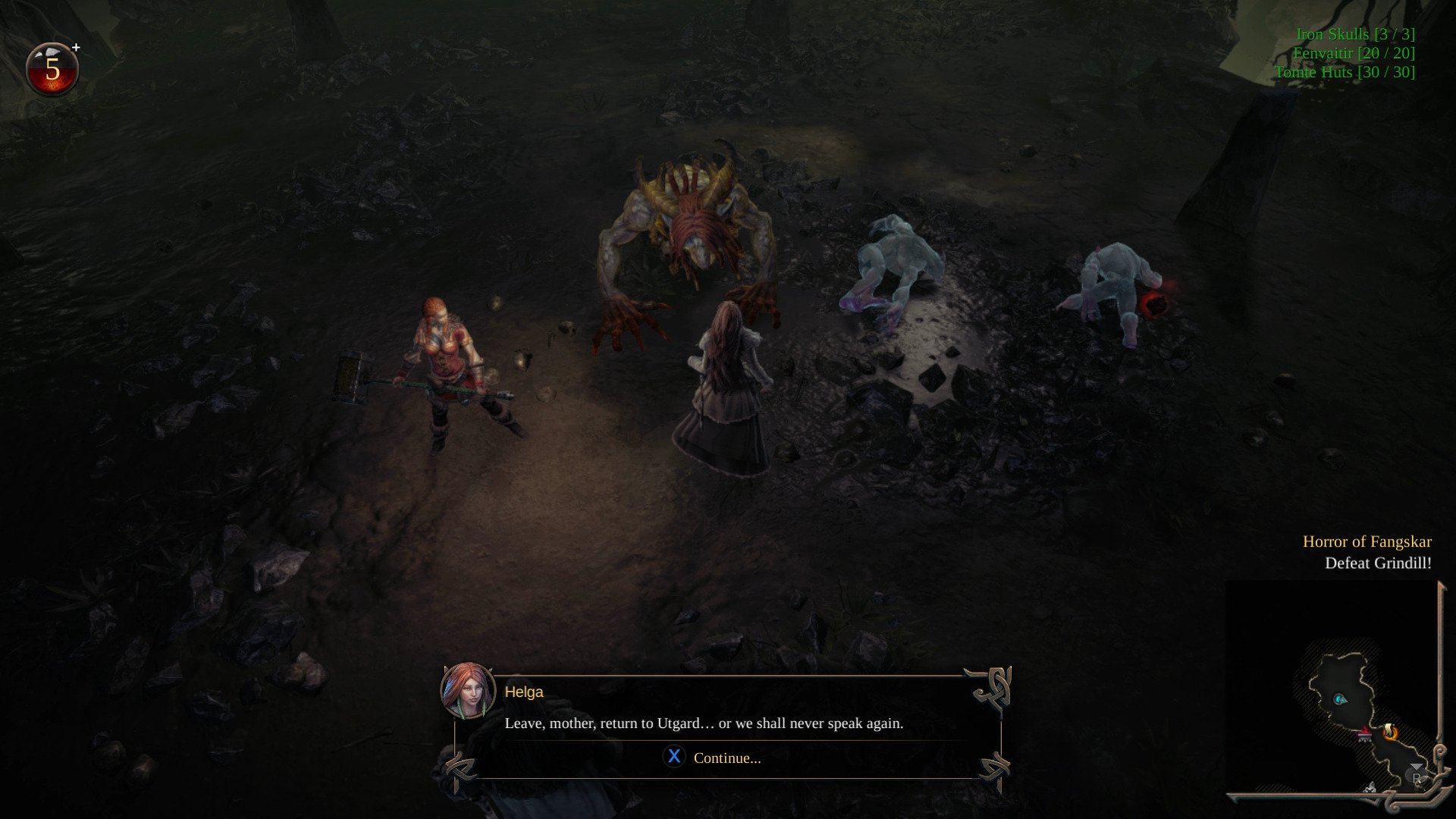
The story in Vikings: Wolves of Midgard is based on Norse mythology and Viking lore. In the realm of Asgard, an ancient conflict between the Norse Gods the Aesir (which includes Odin, Thor, Baldur, and others) and the angelic Vanir (Freya and others) has created turmoil among the nine realms.
The Frost Giants of Nifleheim take advantage of this conflict and start their own war against Midgard – Earth. The Fimbulwinter (a catastrophic global freeze) they release threatens to wipe out humanity. It also portends the coming of Ragnarok, a climactic battle that will destroy the gods of the nine realms. Only one person can stop this calamity – a Viking.
This narrative comes to life mostly through narration before and after every story level. It's suitably atmospheric, but a far cry from the big-budget cinematics of Diablo III. That said, its later levels have more in-engine storytelling to move things along.
Build your own Viking
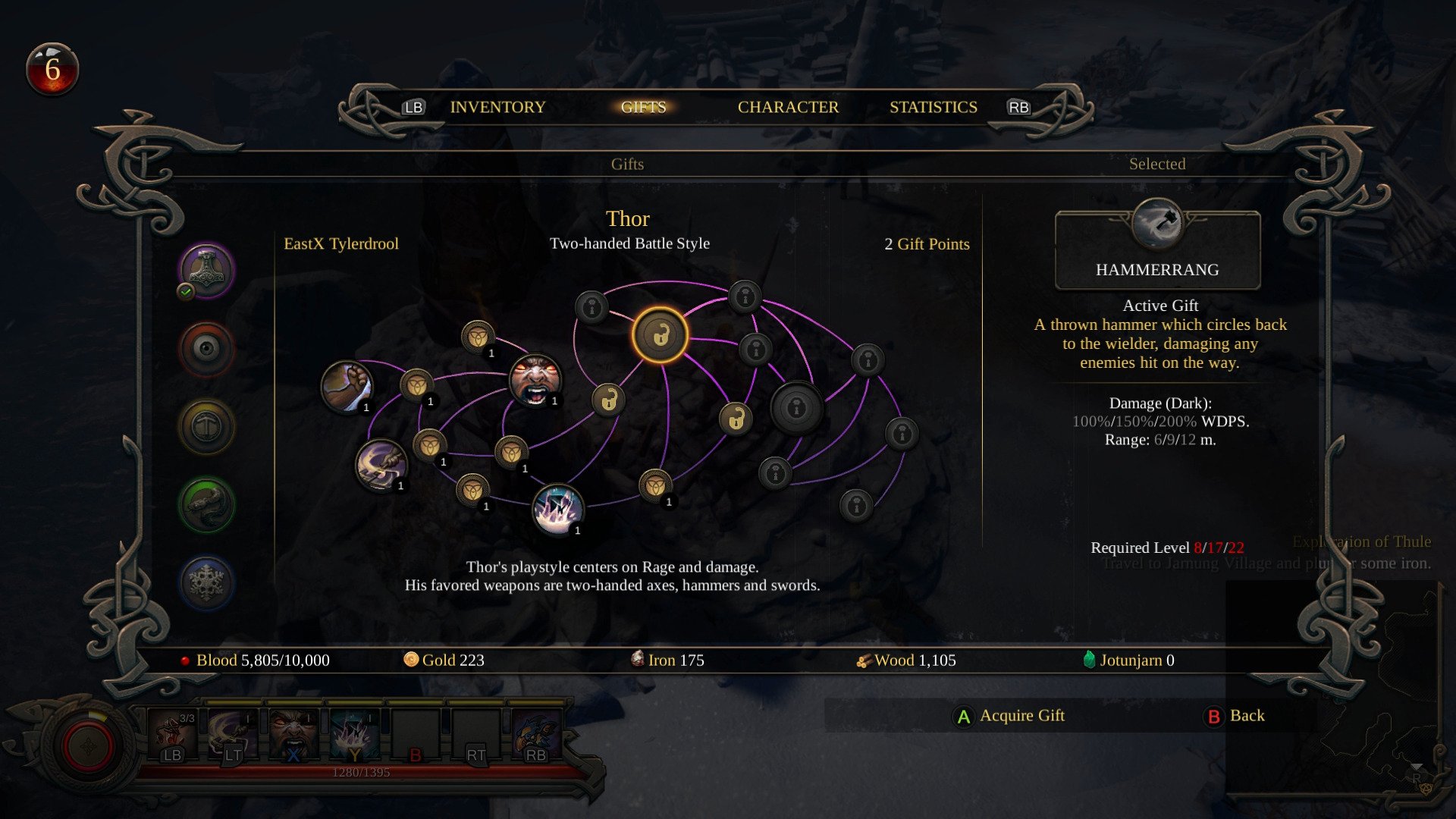
Before starting the game, you'll customize your Viking protagonist. Vikings doesn't offer a ton of customization options, but here's what you can choose:
- Male or female gender
- 7 hairstyles
- 7 jewelry options
- 3 hair colors
- 7 tattoos
- 7 clan symbols
Notably absent is the choice of skin color. Indeed, real-life Vikings were all Caucasian. But this is a fantasy video game, and it would be so easy to throw in some skin choices in the name of diversity.
Having chosen your Viking's appearance, you'll choose his or her chief deity. This choice determines weapon specialization. Thor provides hammer skills, Odin the staff, Tyr sword and shield, Loki dual wielding blades, and Skathi the bow.
All the latest news, reviews, and guides for Windows and Xbox diehards.
This choice is important since the abilities and bonuses (called gifts here) you unlock from one god are only usable while wielding the matching weapon type. But Vikings allows players to switch between two weapons at will, so you're encouraged to at least develop a second god's abilities. I chose the Mighty Thor as my primary god, but I can switch to Skathi's bow when the situation calls for it.
With your character created, you're ready to start the game on the difficulty of your choice. Vikings offers four primary difficulty levels, plus the option to play any of those on Valhalla mode. Valhalla is the equivalent of Diablo's Hardcore mode; die, and you'll be unable to continue.
Hail to the chief, baby
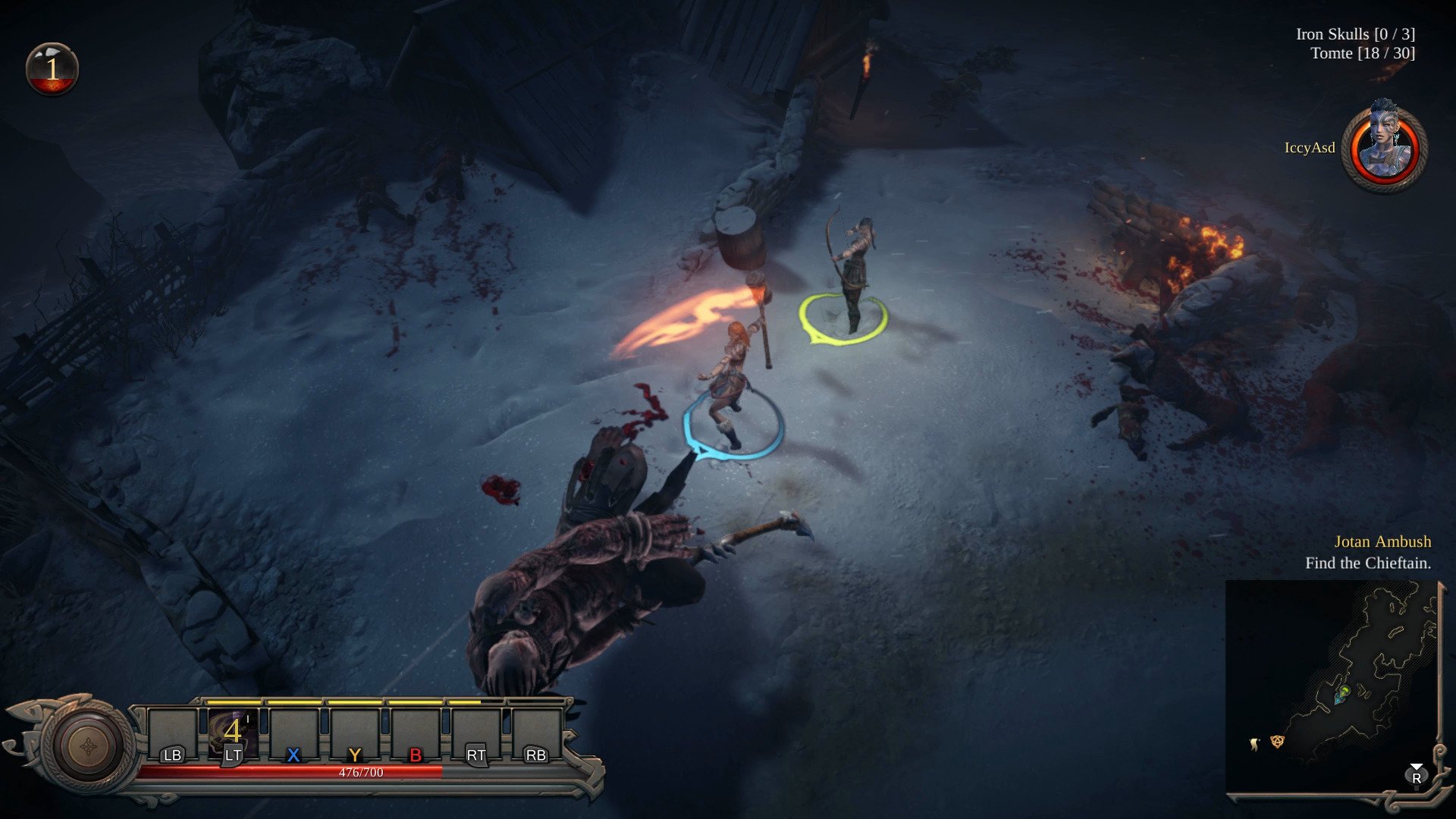
As the game begins, Jotan (Frost Giants) have invaded the village of Ulfung and killed its chieftain. Our hero must rescue the surviving villagers and defeat the sole remaining Jotan and its army of Tomte (goblins). After driving out the invaders, the townsfolk show their thanks by making the player the new chief of the village.
The newly rebuilt village serves as Vikings' hub world. Players will return to the village between raids (missions) to interact with NPCs and purchase upgrades. Initially, our hero has access to an altar, a Skald (medic and poet), and a smithy. As the game progresses, the village will grow and offer new services to our hero. All of these shops can be upgraded, allowing them to sell better goods.
The village includes such important details as a mead hall, the home of the chieftain, where great feasts were held. One detail that disappoints, though, is the non-player characters. The non-shopkeeper NPCs in the village can't be spoken to and don't say anything on their own. They're lifeless window dressing.
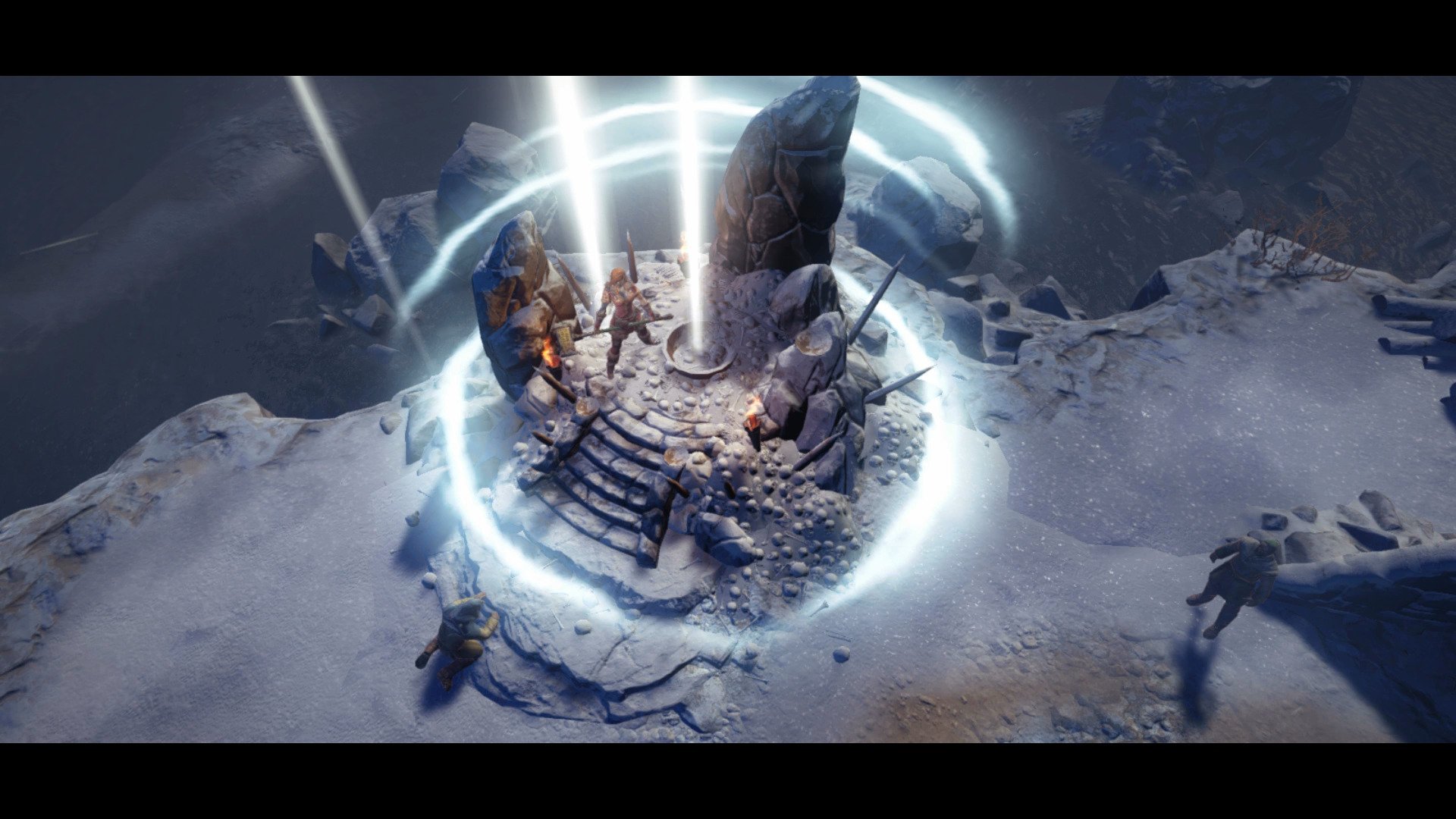
The village also features a great altar where your Viking makes sacrifices to the gods. Rather than earning experience like in Diablo, you actually collect blood and hearts from fallen enemies in this game. Once you've acquired enough blood, you can level up. This lets you choose one stat to improve (from a rather plain-looking menu) and two gifts (abilities or bonuses) from the god of your choice.
As for those hearts needed for leveling up, you really have to walk right over one to get it. It takes them a little while to fall after killing enemies, so I often have to backtrack a few steps just to get those tasty hearts. This hurts the pacing a bit; they really should be magnetic, so we don't have to weave around for them all the time.
Viking Combat
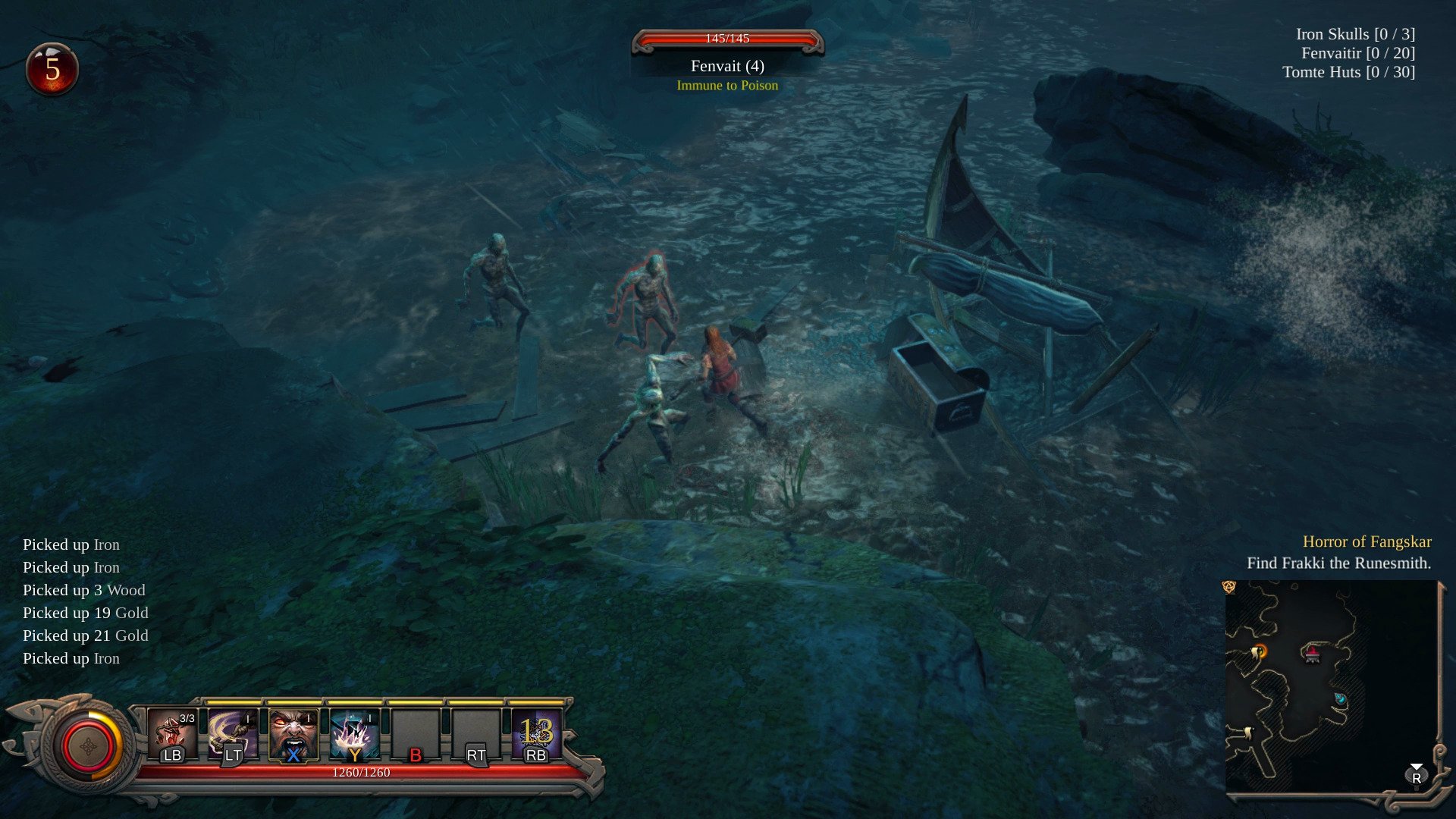
Vikings' combat feels very much like that of Diablo III on consoles, which is a good thing. You start with only a basic attack and the ability to roll by hitting the right analog stick. The gifts purchased when leveling up will unlock additional attacks, each assigned to its own button on the controller. Naturally, these have cooldowns to prevent spamming.
Our hero can equip various healing charms that provide a limited number of healing charges between uses, and sometimes general regenerations. To refill a charm's charges, you'll have to visit one of the blood shrines found throughout each level. This mechanic works similarly to refilling Estus Flasks in Dark Souls.
Vikings were known for their berserker rages, represented here by the Rage mechanic. As you fight, the Rage meter rises. Once filled, you can unleash your Rage at will. The screen goes pale as your warrior's senses become heightened from the bloodlust. Raging provides a damage boost and other benefits, but it only lasts for a short time until you've upgraded it with more gifts.
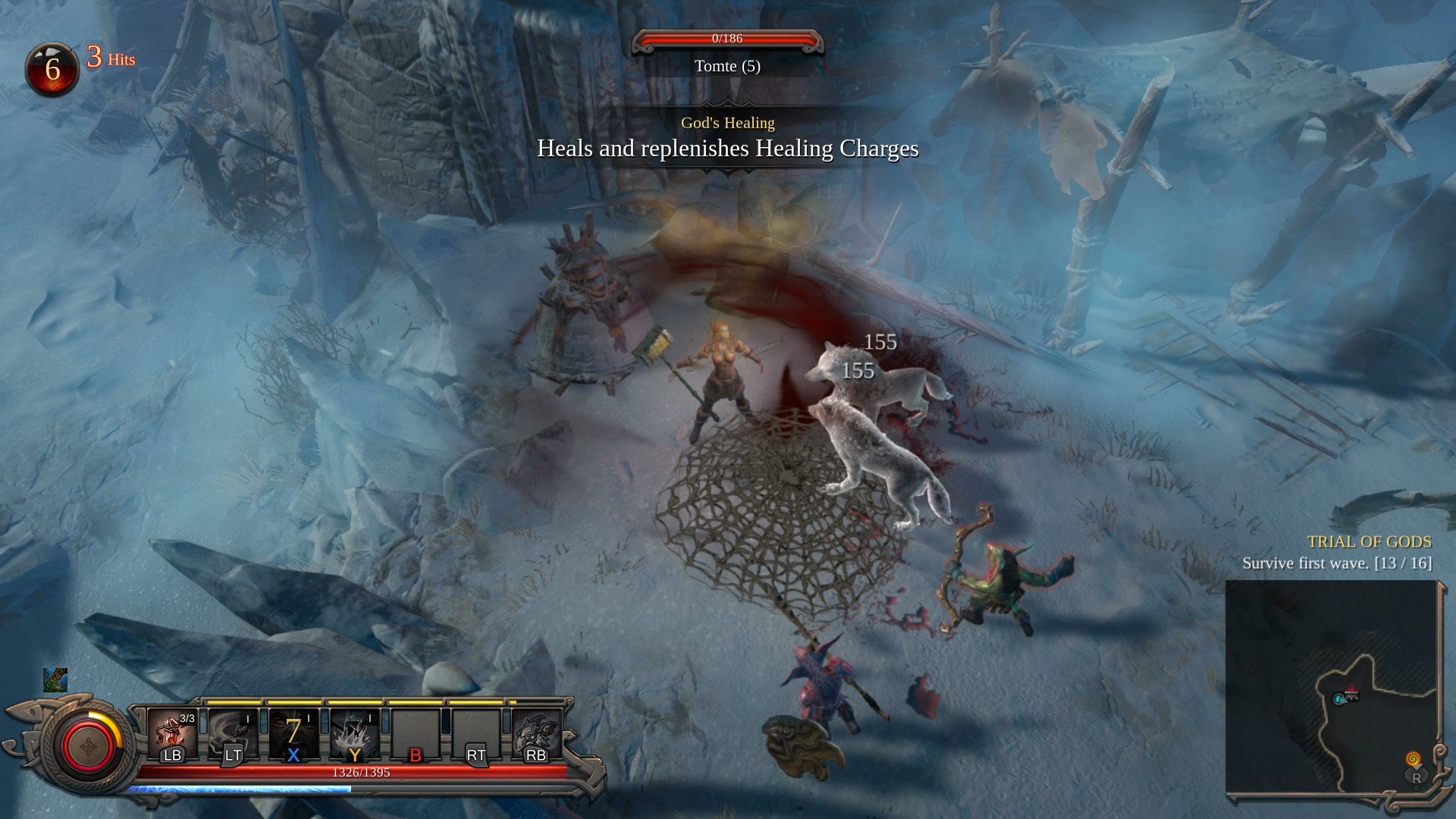
The biggest gameplay difference between Vikings and Diablo is exposure. Some (but not all) of the game's levels take place in freezing climates. The longer you endure it, the greater your exposure meters fills. Once it reaches critical mass, your hero will take constant damage.
To avoid freezing, you'll have to approach one of the campfires helpfully dotted throughout the landscape. The freezing mechanic creates a welcome sense of urgency, as you'll often have to forego fighting until you can reach the next fire and its life-saving warmth. Many levels don't take place in the cold, so the freezing mechanic doesn't overstay its welcome.
Online Co-op
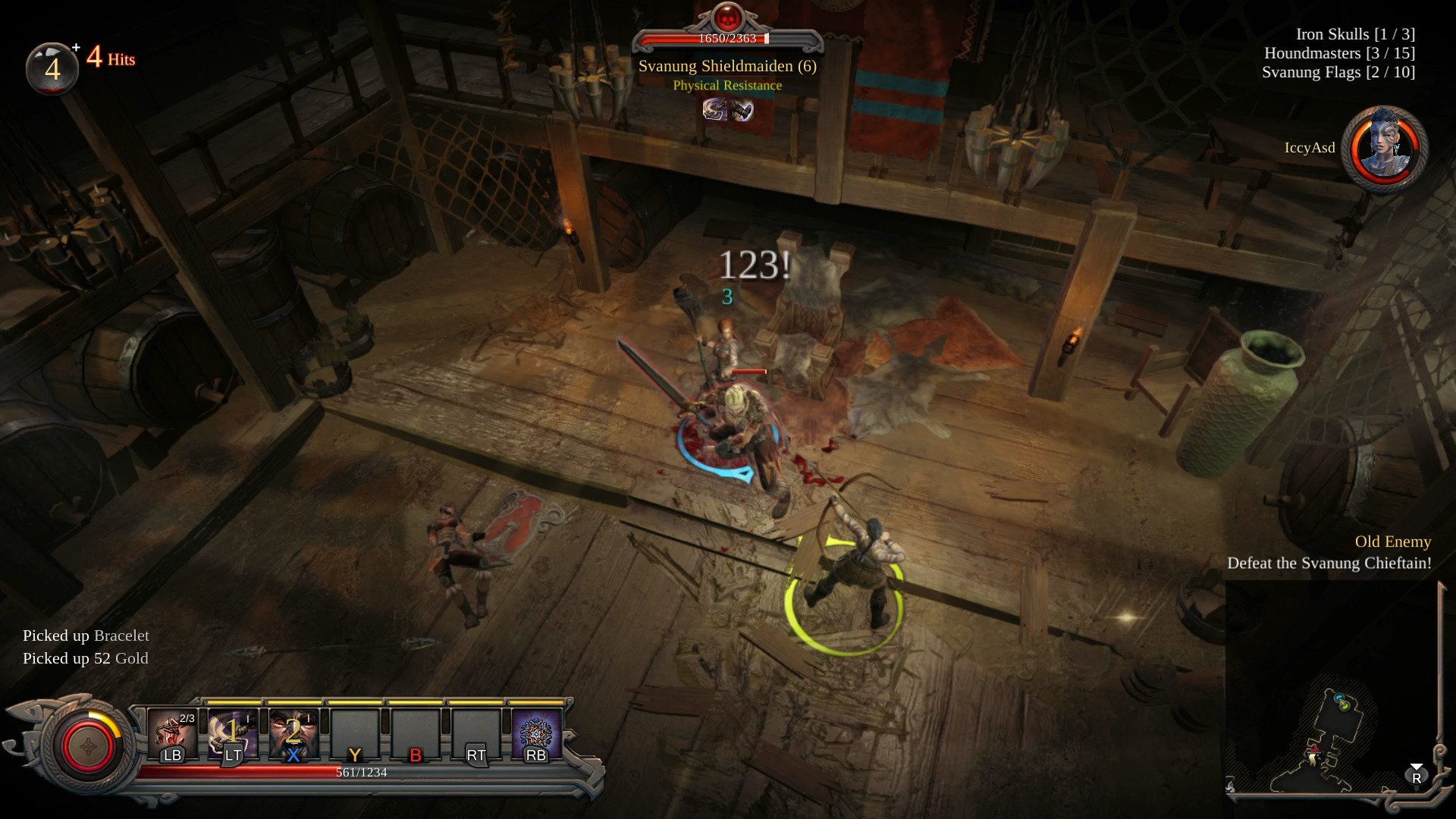
Vikings doesn't quite stack up to Diablo III in the multiplayer arena. Unlike Diablo, this one has no local multiplayer and only supports two-player online co-op. Four-player support would have been nicer, but playing with a single friend is still plenty of fun.
Co-op makes the game a lot easier, especially if you and your partner wield complementary weapons. Loot, gold, hearts and collectibles drop for both teammates, but you each need to pick your stuff up on your own.
This is a drag when it comes to collectibles, as you basically have to stick together to avoid missing them. I'd much rather be able to divide and conquer. And speaking of collectibles, the game only tracks them while you're on a mission. Complete the mission, and you have no way of knowing whether you missed anything.
My partner and I also encountered a bug in which our collectible progress reset during the middle of the second story level, presumably preventing us from getting credit for collecting everything. Kalypso definitely needs to fix that bug, but I also hope they add a way to track overall collectible progress in future updates.
Achievements
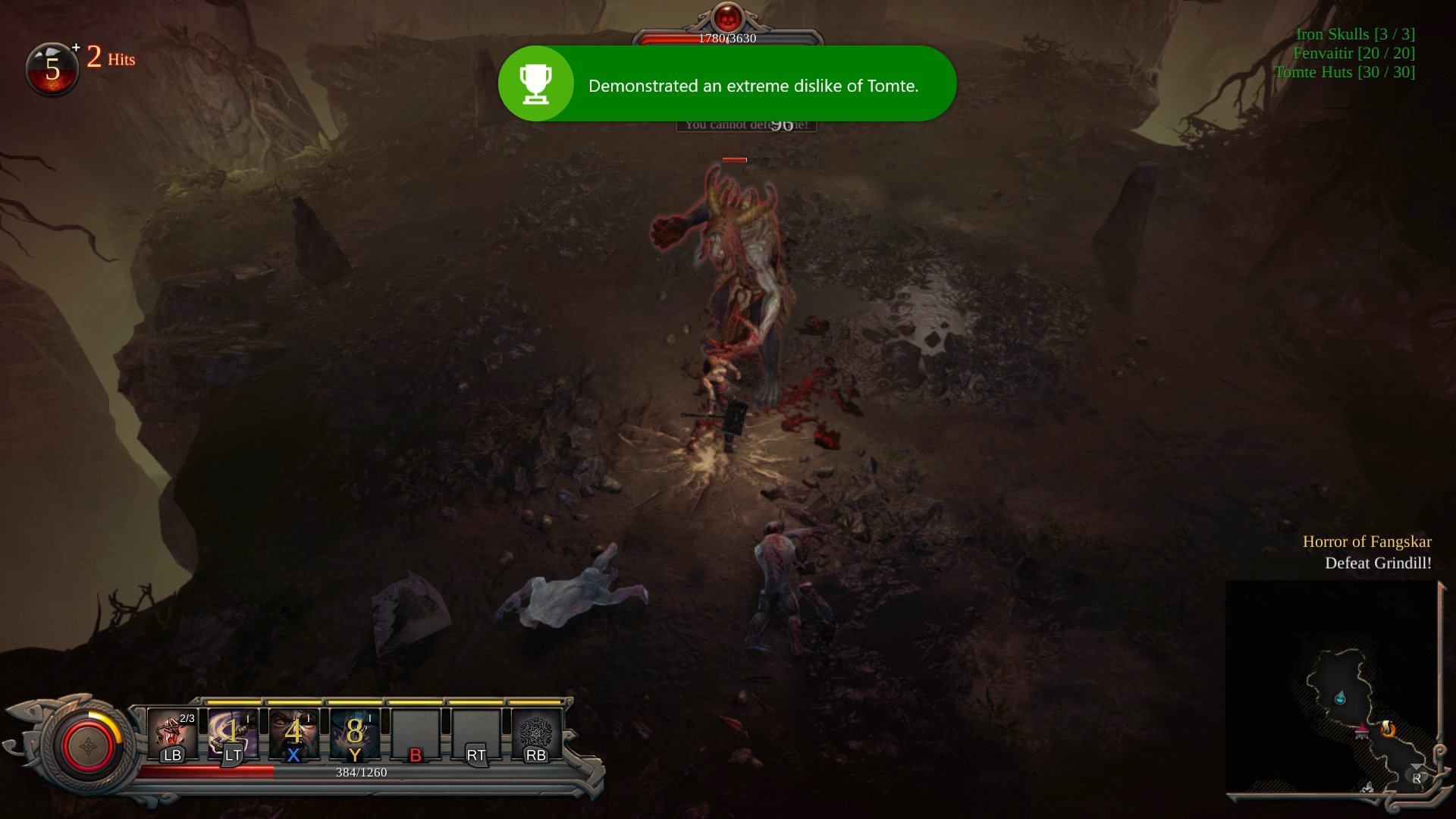
The Xbox One version of Vikings: Wolves of Midgard offers 38 Achievements worth a total of 1,000 Gamerscore. These include completion-based goals like unlocking all of the gifts (abilities) from each god, buying every upgrade for the shows, fully upgrading the alter, etc. The Achievement for collecting one million Blood (XP) will take quite a while as well.
You'll need to beat the game with one character of each gender, complete the Game+ after finishing the game once, beat the game on the highest difficulty, and – most challengingly – beat Valhalla mode (which has permadeath) on the highest difficulty. The latter will require lots of skill and practice, though playing in co-op will make things significantly easier.
Overall Impression
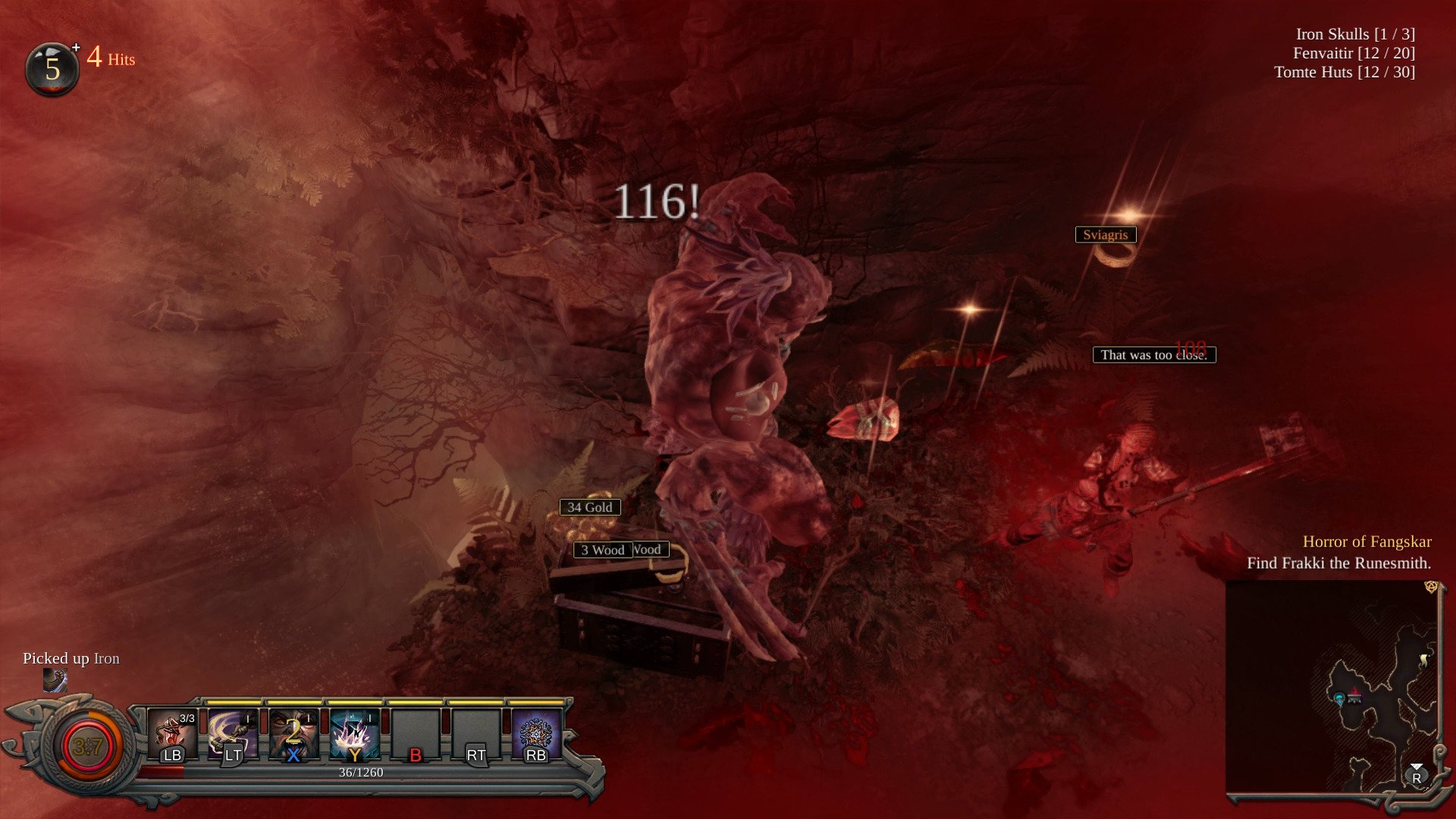
Vikings: Wolves of Midgard isn't quite as good as Diablo III, but it could never have been. A smaller publisher like Kalypso just can't match the budget of a top-tier Activision Blizzard game. That doesn't mean Vikings isn't worth playing, though!
The Viking setting and Norse mythological themes make for a perfectly interesting alternative to Diablo's standard holy-warriors-versus-demons setting. The game looks great (though the frame rate could be a little better) and it plays just as well. This kind of action-RPG is perfect for relaxation, though the higher difficulties will provide a challenge if you want it. Throw in some enjoyable online co-op, and you have one of the better Viking games in recent memory.
Pros:
- Great use of Norse mythology and Viking culture.
- Relaxing and addictive gameplay in the style of Diablo.
- Unique exposure mechanic keeps you on your (frosty) toes.
Cons:
- Collectibles aren't shared between co-op players and are impossible to track between levels.
- To change difficulty levels, you have to start a whole new character.
- Your character is rude to everybody he or she meets for no apparent reason.
Although I do recommend that fans of Diablo-style games pick Vikings up, the console pricing is somewhat suspect. The Steam version of Vikings sells for $39.99 – a fair price for an AA-level game. On Xbox One and PlayStation 4, the game costs $59.99. Given that it launched on all three platforms simultaneously, there's no good reason for such a large price disparity. If you play games on both console and PC, the lower price makes the Steam version the one to get.

Paul Acevedo was formerly a Games Editor at Windows Central. A lifelong gamer, he has written about videogames for over 15 years and reviewed over 350 games for our site. Follow him on Twitter @PaulRAcevedo. Don’t hate. Appreciate!
